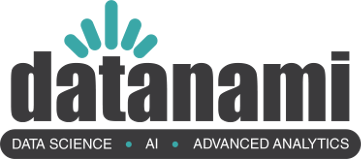
A New Benchmark for Big Data
Database expert Chaitanya Baru keeps one foot in the world of high performance computing via his role at the San Diego Supercomputer Center (SDSC), and another firmly planted on enterprise big data soil.
 The data-intensive systems researcher has garnered a fair amount of attention lately with his plan to build a new stable benchmark for big data—one that pulls elements from both of those worlds he inhabits.
The data-intensive systems researcher has garnered a fair amount of attention lately with his plan to build a new stable benchmark for big data—one that pulls elements from both of those worlds he inhabits.
Baru and team’s stated mission with their BigData Top 100 project is to “provide academia with a way to evaluate new techniques for big data in a realistic setting; industry with a tool to drive development; and customers with a standard way to make informed decisions about big data systems.”
However, without identifying the variables and how to reflect how dynamic and frequently-changing they are, the team would simply be creating another static benchmark, useful only in certain settings. This is the foundation upon which the benchmark’s value rests, Baru told us in a conversation last week.
He explained that the project will be iterative in nature, with the first benchmark being the basis for the next, and so on, until a constantly-shifting benchmark is created that maintains standardization in the wake of change. Baru says this will be an open benchmark-development process, based input from the steering committee, which is a balance of industry and academic perspectives.
The BigData Top 100 effort will culminate in an end-to-end application-layer benchmark for measuring the performance of big data applications with recognition that the benchmark itself must evolve to meet the needs of ever-changing applications. The final result of this benchmark-building effort will emerge this year following critical input from the vendor, academic and user communities that have tied themselves to the project to decide how to capture the evolving elements and snap them into the benchmark itself.
Baru says that any new big data benchmark should factor in the addition of new feature sets, large data sizes, large-scale and evolving system configurations, shifting loads, and heterogeneous technologies of big data platforms.
According to the team, the following are critical elements of an ideal big data benchmark:
|
• Simplicity: Following the dictum that “Everything should be made as simple as possible, but no simpler,” the benchmark should be technically simple to implement and execute. This is challenging, given the tendency of any software project to overload the specification and functionality, often straying from the most critical and relevant aspects. |
|
|
• Ease of benchmarking: The costs of benchmark implementation/execution and any audits should be kept relatively low. The benefits of executing the benchmark should justify its expense—a criterion that is often underestimated during benchmark design. |
|
|
• Time to market: Benchmark versions should be released in a timely fashion in order to keep pace with the rapid market changes in the big data area. A development time of 3 to 4 years, common for industry consortia, would be unacceptable in the big data application space. The benchmark would be outdated and obsolete before it is released! |
|
|
• Verifiability of results: Verification of results is important, but the verification process must not be prohibitively expensive. Thus, to ensure correctness of results while also attempting to control audit costs, the BigData Top100 List will provide for automatic verification procedures along with a peer-review process via a benchmark steering committee to ensure verifiability of results. |
At the core, says Baru, is the non-static, concurrent development of the benchmark that differentiates it from the slew of other static application or hardware benchmarks out there. During our chat last week, he noted that while established communities like HPC have had decades to work out its own primary measurements (FLOPS, for example), big data benchmark efforts to date have been scattered, for specific application areas and based on consistent factors.
For instance, the Graph 500 has become a popular benchmark for graph problems, but the results of the algorithmic test would be meaningless when looking at a key value-based problem’s performance. The same is true of the Terasort benchmark, which only applies to a specific subset of real-world applications. On that note, the standard measurements for distributed systems, such as measuring high performance computing installations, are themselves not a fit for the new data-intensive world. Baru said even for a traditional supercomputer center like SDSC, the real concerns are around the massive wells of data from scientific applications, including large simulations.
Further, being able to factor in price for performance is a critical element, he argued, noting that some of the more successful big data-oriented benchmarks factor this in but are too narrow in their scope “While the performance of traditional database systems is well understood and measured by long-established institutions such as the Transaction Processing Performance Council (TCP), there is neither a clear definition of the performance of big data systems nor a generally agreed upon metric for comparing these systems,” he claims.
The vendor angle is important here since there is something in it for them—namely a standard to compare performance in the context of price. With the help of a team comprised of other researchers from Greenplum, Oracle, IBM, Cisco and others, Baru hopes to bring a new eye to performance/price metrics for large-scale data projects. The goal is to create a new standard for “big data” vendors to begin comparing their wares along a benchmark that is tailored to reflect real data-intensive workloads.
It should be stressed that while there is vendor support behind the initiative, this is still a very academically-rooted effort—and one that takes its cues from some of the highest-performing systems on the planet. It began as an NSF-funded workshop at the Center for Large-Scale Data Systems Research and the San Diego Supercomputer Center.
Baru is a key figure at the supercomputing center—he’s also been working in the field of “big data” before it ever had the mainstream moniker, both in his work at with the Data Intensive Computing Environments (DICE) Group and at his earlier post in the early-mid 90s as a lead behind large-scale database research. During his tenure there he was one of three IBMers who led the design and development of the DB2 Parallel Edition, which hit the market in 1995 and shook up the database space. As head of large-scale data-intensive efforts underway now at SDSC, he is seeing the triple-v problems of big data firsthand at an extreme scale.
While the problems of supercomputing centers’ scientific simulations and applications might sound rather removed from the real-world concerns of enterprise shops struggling to keep up with their needs for big, fast data handling, there are some useful lessons Baru is bringing over from the big box world of supercomputing—at least in concept.
“We think that data is the real context for the FLOPS,” said Baru, noting that the traditional method of looking at the power of a system was to measure its Floating Operations Per Second (hence the acronym). While he says that hardware optimizations are still critical, the software stack needs to continue to evolve to meet the increasingly diverse needs of the scientific community.
Related Articles
DDN Captures Hadoop with HPC Hook
Juneja: HPC, Cloud, and Open Source the Nexus of Big Data Innovation
May 10, 2024
May 9, 2024
- Lightning AI Launches Its Studio Platform in AWS Marketplace
- Precisely Continues to Expand Reach and Capabilities for Data Enrichment and Geo Addressing
- Databricks Enhances Enterprise AI with RAG Applications and Improved Model Serving
- StarTree Extends Real-Time Analytics Capabilities for Observability and Anomaly Detection Use Cases
- Snowflake Unveils the Future of AI and Data at 6th Annual Data Cloud Summit
May 8, 2024
- IBM and SAP Announce New Generative AI Capabilities to Transform Business Processes
- Alteryx: Businesses Embrace Generative AI, but General Public Remains Wary
- Atlan’s Control Plane to Power Data & AI Governance Attracts $105M
- Cisco Unlocks AI-Powered Intelligence for Self-Hosted Observability
- Boomi Accelerates Enterprise Data Connectivity with Advanced API Management Acquisitions
- Elastic Security Labs Releases Guidance to Avoid LLM Risks and Abuses
- Neo4j Empowers Syracuse University with $250K Grant to Tackle Misinformation in 2024 Elections
- Cloudera Unveils New Flow Management and Streaming Operators at Red Hat Summit
- DataForge Open-Sources First Functional Data Programming Framework
May 7, 2024
- Datadog Launches IT Event Management to Enhance AIOps Capabilities
- Panasas Rebrands as VDURA: A New Chapter in Software-Defined Storage for AI Applications
- Niobium Secures $5.5M in Venture Financing to Commercialize FHE Accelerator Chip
- Oracle Code Assist Can Help Developers Build Applications Faster with AI
Most Read Features
Sorry. No data so far.
Most Read News In Brief
Sorry. No data so far.
Most Read This Just In
Sorry. No data so far.
Sponsored Partner Content
-
Get your Data AI Ready – Celebrate One Year of Deep Dish Data Virtual Series!
-
Supercharge Your Data Lake with Spark 3.3
-
Learn How to Build a Custom Chatbot Using a RAG Workflow in Minutes [Hands-on Demo]
-
Overcome ETL Bottlenecks with Metadata-driven Integration for the AI Era [Free Guide]
-
Gartner® Hype Cycle™ for Analytics and Business Intelligence 2023
-
The Art of Mastering Data Quality for AI and Analytics
Sponsored Whitepapers
Contributors
Featured Events
-
AI & Big Data Expo North America 2024
 June 5 - June 6Santa Clara CA United States
June 5 - June 6Santa Clara CA United States -
CDAO Canada Public Sector 2024
 June 18 - June 19
June 18 - June 19 -
AI Hardware & Edge AI Summit Europe
 June 18 - June 19London United Kingdom
June 18 - June 19London United Kingdom -
AI Hardware & Edge AI Summit 2024
 September 10 - September 12San Jose CA United States
September 10 - September 12San Jose CA United States -
CDAO Government 2024
 September 18 - September 19Washington DC United States
September 18 - September 19Washington DC United States


























